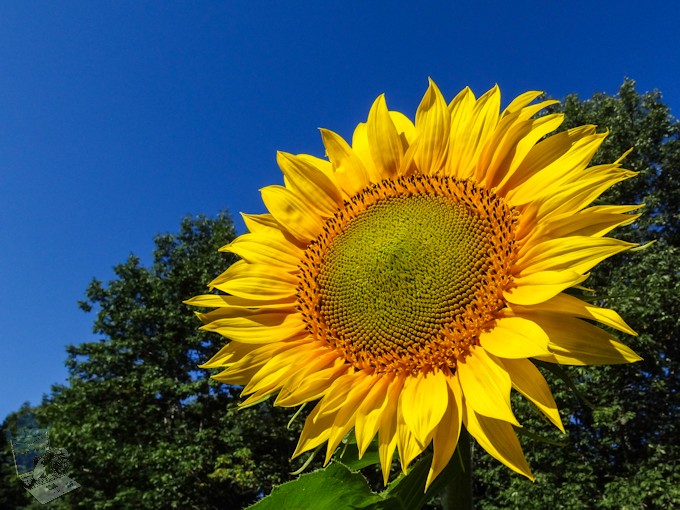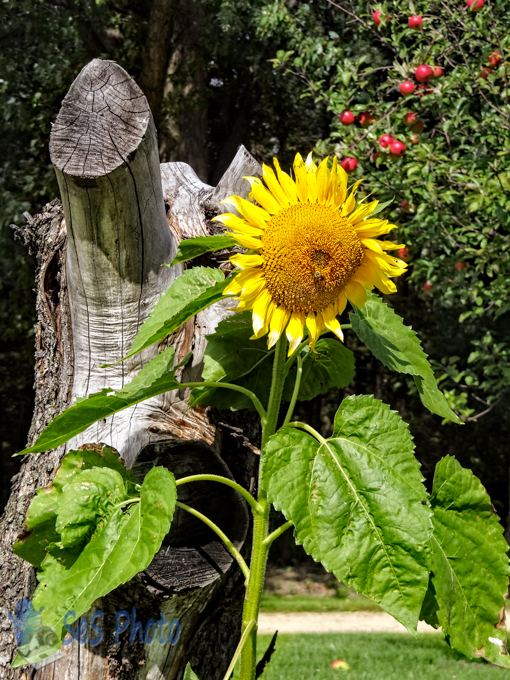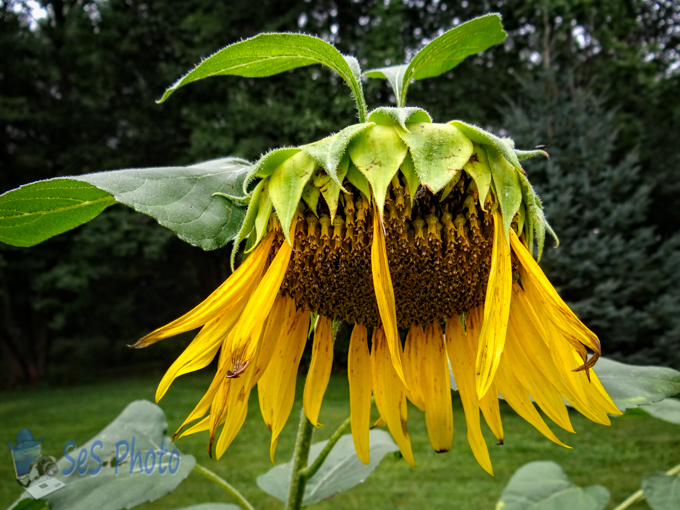This newly opened sunflower is smiling in the sunshine and many others are smiling because it is Friday and the weekend is near.
The sunflower (Helianthus annuus) is an annual plant native to the Americas. The earliest known examples in the United States of a fully domesticated sunflower have been found in Tennessee, and date to around 2300 BC.
What is usually called the “flower” on a mature sunflower is actually a “flower head” (also known as a “composite flower”) of numerous florets (small flowers) crowded together. The outer petal-bearing florets (ray florets) are sterile and can be yellow, red, orange, or other colors. The florets inside the circular head are called disc florets, which mature into seeds.
The flower petals within the sunflower’s cluster are always in a spiral pattern. Generally, each floret is oriented toward the next by approximately the golden angle, 137.5°, producing a pattern of interconnecting spirals, where the number of left spirals and the number of right spirals are successive Fibonacci numbers. Typically, there are 34 spirals in one direction and 55 in the other; on a very large sunflower there could be 89 in one direction and 144 in the other. This pattern produces the most efficient packing of seeds within the flower head.
(And for those who haven’t had math class is a while, the Fibonacci numbers are the numbers in the following integer sequence: 0, 1, 1, 2, 3, 5, 8, 13, 21, 34, 55, 89, 144, …, where the first two numbers in the Fibonacci sequence are 0 and 1, and each subsequent number is the sum of the previous two. And the sunflower uses 34 and 55 or 89 and 144.)
The Golden Sunflower








